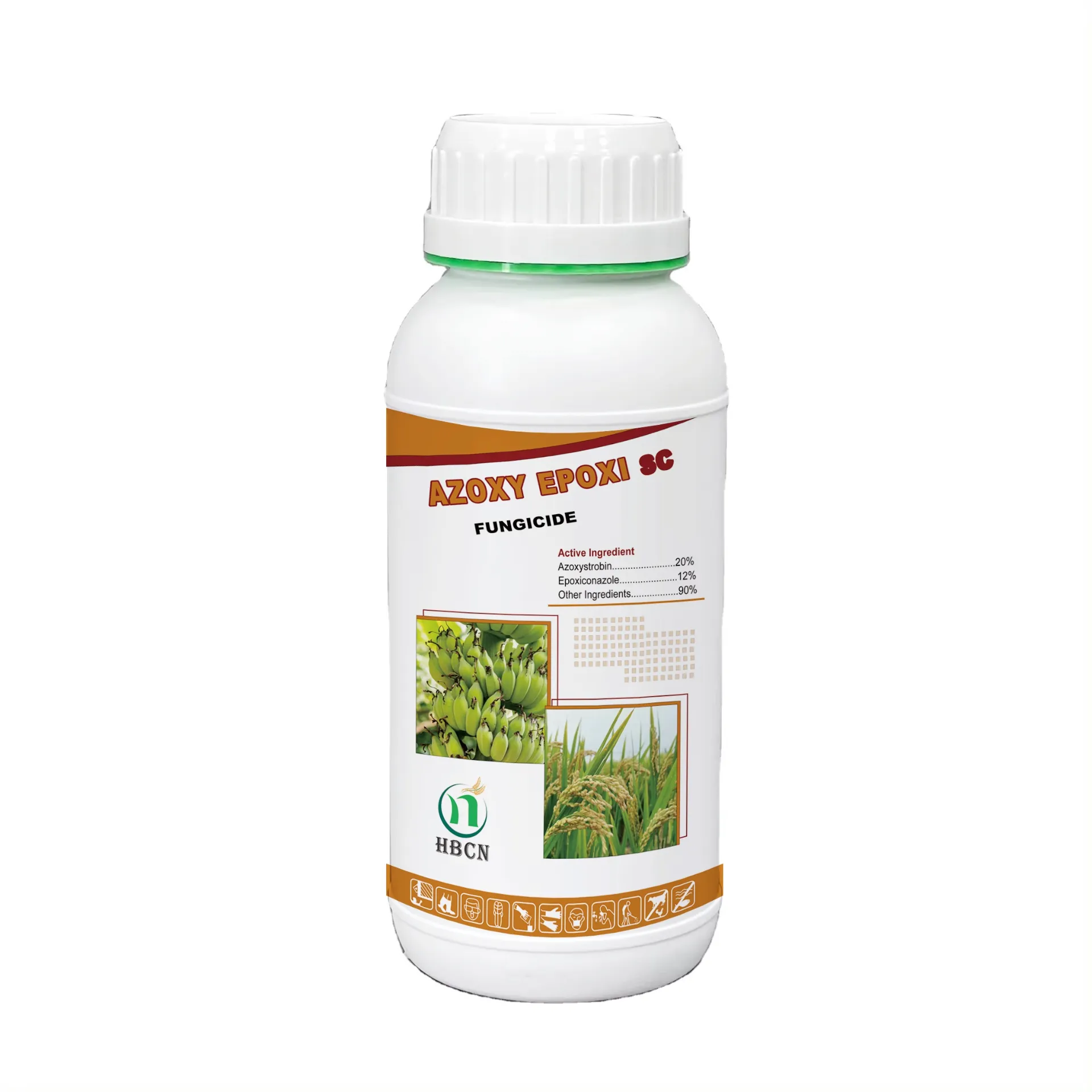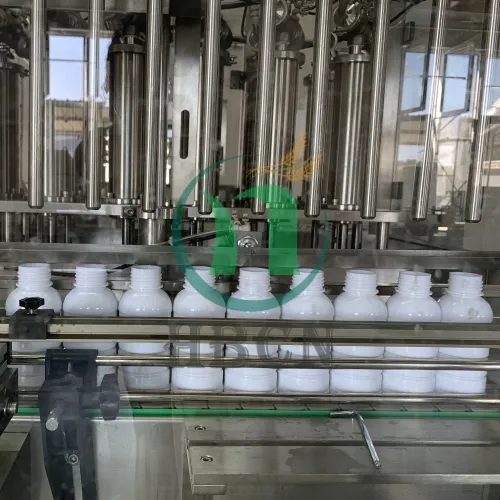
sie . 11, 2025 01:00 Back to list
Azoxystrobin: Broad-Spectrum Fungicide Solutions
Understanding Azoxystrobin: A Pillar in Modern Crop Protection
In the rapidly evolving landscape of global agriculture, effective disease management remains paramount for ensuring food security and sustainable farming practices. Among the arsenal of modern fungicides, azoxystrobin stands out as a foundational active ingredient, widely recognized for its broad-spectrum efficacy and systemic properties. As a leading strobilurin fungicide, it plays a critical role in controlling a diverse range of plant pathogenic fungi across numerous crops, from cereals and fruits to, crucially, vegetable plants. Its mechanism of action, inhibiting mitochondrial respiration in fungi, provides robust protection, helping growers mitigate yield losses and enhance crop quality. The versatility and consistent performance of products containing azoxystrobin have made them indispensable tools for professional agricultural operations worldwide, driving industry trends towards more resilient and productive cultivation systems.
The agricultural industry continues to grapple with challenges such as evolving disease resistance and increasing demands for higher yields with reduced environmental impact. In this context, advanced formulations like Azoxystrobin 20% Epoxiconazole 12%SC represent a synergistic approach. This combination leverages the systemic and translaminar activity of azoxystrobin with the curative and protective action of Epoxiconazole, a triazole fungicide. This dual mode of action is crucial for comprehensive disease control and resistance management, particularly in high-value vegetable crops. The strategic integration of such advanced solutions underscores a commitment to sustainable agriculture, offering growers powerful tools that align with modern crop protection strategies while safeguarding plant health and ensuring economic viability.
Technical Specifications and Industry Parameters of Azoxystrobin
Understanding the precise technical parameters of active ingredients like azoxystrobin is crucial for formulators, agronomists, and large-scale agricultural enterprises. As a methoxyacrylate strobilurin, azoxystrobin (CAS No.: 131860-33-8) operates by inhibiting electron transfer in fungal mitochondrial respiration, specifically at the quinone outside (Qo) site of complex III. This highly specific mode of action classifies it as a QoI fungicide. Its efficacy is well-documented against Oomycetes, Ascomycetes, Basidiomycetes, and Deuteromycetes. Formulations vary widely to suit diverse application methods and crop types, including Suspension Concentrates (SC), Emulsifiable Concentrates (EC), and Wettable Granules (WG). Common concentrations found in the market range from azoxystrobin 11, azoxystrobin 23, azoxystrobin 25, to higher strengths like azoxystrobin 50. The azoxystrobin 2sc (Suspension Concentrate) is particularly popular for its ease of handling and excellent crop safety profile.
| Parameter | Value/Description |
|---|---|
| Chemical Name (IUPAC) | Methyl (E)-2-{2-[6-(2-cyanophenoxy)pyrimidin-4-yloxy]phenyl}-3-methoxyacrylate |
| CAS Number | 131860-33-8 |
| Molecular Formula | C22H17N3O5 |
| Molecular Weight | 403.4 g/mol |
| Physical State | White to off-white solid |
| Melting Point | 116-117 °C |
| Solubility in Water | 6.7 mg/L (20°C) |
| Mode of Action | Systemic, translaminar, protective, and curative fungicide. Inhibits mitochondrial respiration (QoI). |
| Application Spectrum | Broad-spectrum, active against Oomycetes, Ascomycetes, Basidiomycetes, Deuteromycetes. |
| Typical Formulations | SC (Suspension Concentrate), EC (Emulsifiable Concentrate), WG (Wettable Granule) - e.g., azoxystrobin 2f |

Manufacturing Process of Azoxystrobin: From Synthesis to SC Formulation
The production of high-quality azoxystrobin involves a sophisticated multi-step chemical synthesis process, followed by meticulous formulation into a marketable product like Azoxystrobin 20% Epoxiconazole 12%SC. The manufacturing begins with the precise synthesis of the active ingredient, involving complex organic reactions to achieve the desired molecular structure. Key raw materials undergo rigorous quality checks before entering the reaction vessels. This includes ensuring the purity and stability of precursors to guarantee the final product's integrity and efficacy. Post-synthesis, the crude azoxystrobin is subjected to a series of purification steps, often involving recrystallization or solvent extraction, to remove impurities and achieve the high purity levels required by international standards such as FAO specifications and national pesticide registration guidelines.
Once purified, the technical grade azoxystrobin is then carefully blended with other active ingredients, such as Epoxiconazole, and inert components to create specific formulations like Suspension Concentrate (SC). The SC formulation process is critical: it involves milling the solid active ingredients into fine particles (typically 1-10 microns) using specialized equipment like bead mills. This fine dispersion is suspended in water with the aid of dispersants, wetting agents, anti-foaming agents, and thickeners. Each batch undergoes stringent quality control testing at various stages of production. This includes particle size analysis, active ingredient content verification via HPLC (High-Performance Liquid Chromatography), pH stability tests, and long-term storage stability assessments. Compliance with ISO 9001 for quality management systems and ISO 14001 for environmental management ensures that every batch meets global benchmarks for safety, efficacy, and environmental responsibility, reflecting a commitment to product excellence and reliability for diverse applications in vegetable plants.

Application Scenarios and Strategic Advantages in Vegetable Cultivation
The combined power of azoxystrobin and Epoxiconazole in an SC formulation offers significant advantages for a wide array of vegetable plants, addressing common and devastating diseases. This product, Azoxystrobin 20% Epoxiconazole 12%SC, is particularly effective against major fungal pathogens such as early blight (Alternaria solani), late blight (Phytophthora infestans), powdery mildew (Erysiphe cichoracearum), downy mildew (Peronospora parasitica), rusts, and various leaf spot diseases. Its dual systemic and protective action means it moves within the plant, offering protection to new growth and ensuring both preventative and curative control. For instance, in tomato and potato cultivation, it provides robust defense against early and late blights, which can rapidly decimate entire fields. In cucurbits like cucumbers and squash, it excels in managing powdery and downy mildews, critical for maintaining fruit quality and yield.
Beyond disease control, the physiological benefits of azoxystrobin contribute to enhanced plant vigor and yield. Research has shown its ability to improve nitrogen assimilation, reduce stress responses, and extend the green leaf area, leading to more efficient photosynthesis. This 'greening effect' translates into healthier plants, larger harvests, and superior produce quality. Farmers using this combination fungicide report not only effective disease suppression but also noticeable improvements in crop resilience against environmental stresses. The high-concentration SC formulations, such as azoxystrobin 2f or azoxystrobin 2sc, ensure efficient coverage and uptake, maximizing the return on investment for growers. This strategic application of advanced fungicides underscores their role not just as disease fighters, but as yield enhancers in modern, high-intensity vegetable production systems.
Custom Solutions and Client-Centric Approaches
Recognizing the diverse needs of global agricultural markets, leading manufacturers provide customized solutions tailored to specific regional pest pressures, crop types, and regulatory environments. For Azoxystrobin 20% Epoxiconazole 12%SC, this means offering flexible packaging options, from small retail packs to large bulk container111s suitable for commercial growers and distributors. Beyond standardized offerings like azoxystrobin 25 or azoxystrobin 50, clients can often request specific concentration adjustments or co-formulations to address unique challenges. Our technical team works closely with clients to understand their precise requirements, providing detailed application guides, resistance management strategies, and safety data sheets (SDS) to ensure optimal product performance and compliance. This consultative approach extends to supporting pesticide registration processes in various countries, leveraging our extensive expertise and dossier information.
Our commitment to customer success is reflected in comprehensive after-sales support, including agronomic advice and technical troubleshooting. We maintain a robust supply chain and efficient logistics, with a typical delivery cycle for formulated products ranging from 30-45 days, subject to order volume and destination. All our products, including those featuring azoxystrobin, come with a standard 2-year warranty from the date of manufacture, provided they are stored under recommended conditions. This assurance, coupled with responsive customer service and dedicated account management, builds long-term partnerships. We pride ourselves on transparent communication and reliable product delivery, ensuring that our clients receive not just a product, but a complete solution designed to enhance their agricultural productivity and profitability.

Frequently Asked Questions (FAQ)
-
Q: What is the primary mode of action of Azoxystrobin 20% Epoxiconazole 12%SC?
A: This product combines two active ingredients. Azoxystrobin is a QoI fungicide that inhibits mitochondrial respiration, providing systemic and translaminar protection. Epoxiconazole is a DMI (Demethylation Inhibitor) triazole fungicide that interferes with fungal cell membrane synthesis, offering both protective and curative action. This dual mode enhances efficacy and aids in resistance management.
-
Q: Which vegetable diseases can this product effectively control?
A: It is highly effective against a broad spectrum of diseases common in vegetable plants, including but not limited to early and late blight, powdery mildew, downy mildew, rusts, and various leaf spot diseases across crops like tomatoes, potatoes, cucurbits, and leafy greens. Specific efficacy depends on the target pathogen and application rates.
-
Q: What are the storage requirements for Azoxystrobin 20% Epoxiconazole 12%SC?
A: Store in the original sealed container111 in a cool, dry, well-ventilated area away from direct sunlight and extreme temperatures. Keep out of reach of children, unauthorized persons, and animals. Proper storage ensures product stability and extends its shelf life, typically 2 years from the date of manufacture.
-
Q: Is this product safe for beneficial insects and pollinators?
A: While fungicides are generally less toxic to insects than insecticides, it's crucial to follow label instructions regarding application timing to minimize exposure to beneficial insects and pollinators. Avoid application during peak foraging times for bees. Adherence to recommended application rates and methods reduces environmental impact.
-
Q: What is the typical delivery timeframe for bulk orders of this fungicide?
A: For bulk orders, our standard delivery cycle typically ranges from 30 to 45 days, depending on the order volume, specific customization requirements, and the destination country's logistics. We work with established freight partners to ensure timely and secure delivery. Expedited options may be available upon request, subject to additional charges.
Authoritative References
Bartlett, D. W., Clough, J. M., Godwin, J. R., Hall, A. A., Hamer, M., & Parr-Dobrzanski, B. (2002). The strobilurin fungicides. Pest Management Science, 58(7), 649-662. DOI: 10.1002/ps.520
Godwin, J. R., Clough, J. M., & Bartlett, D. W. (2007). Azoxystrobin: from research to widespread use. In Modern Crop Protection Compounds (pp. 705-728). Wiley-VCH Verlag GmbH & Co. KGaA. DOI: 10.1002/9783527613112.ch24
FRAC (Fungicide Resistance Action Committee). (Current Year). FRAC Code List©. Accessed from https://www.frac.info/frac-code-list
This is the last article
-
Azoxystrobin: Broad-Spectrum Fungicide Solutions
NewsAug.11,2025
-
Best EPA Boscalid: Superior Crop Fungicide for Max Yields
NewsAug.11,2025
-
Best Willowood Imidacloprid: Superior Pest Control Solutions
NewsAug.10,2025
-
Best EPA Boscalid Fungicide: Ultimate Crop Protection
NewsAug.09,2025
-
Cyprodinil Fungicide: Broad-Spectrum Crop Protection
NewsAug.08,2025
-
Tembotrione Herbicide: Advanced 8% OD for Broad Spectrum
NewsAug.07,2025
